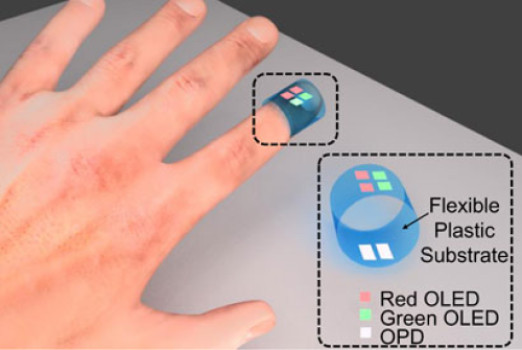Conventional pulse oximeters use LEDs to send red and infrared light through one’s fingertip or earlobe. Bright, oxygen-rich blood absorbs more infrared light, and darker, oxygen-poor blood absorbs more red light. The ratio of the two wavelengths, determined by sensors, reveals how much oxygen is in the blood.
Berkeley professor Ana Clauda Arias has built pulse oximeter functions into flexible carbon-based materials, instead of rigid chips fabricated with silicon. She used red and green light, which yield comparable differences to red and infrared when distinguishing high and low levels of oxygen in the blood. Arias compares the “organic electronics” to band-aids, as they are disposable, cheap and flexible. Her study was published in Nature Communications this week.
The organic LEDs were printed on flexible plastic,with a spin coating that uses centrifugal force to deposit a solution with the material in a thin, uniform film. An organic photodiode converted the light received through the tissue into a current, enabling it to be configured into flexible forms.
Minimal, flexible pulse oximetry can be incorporated into the next generation of fitness wearables, enhancing performance metrics.
